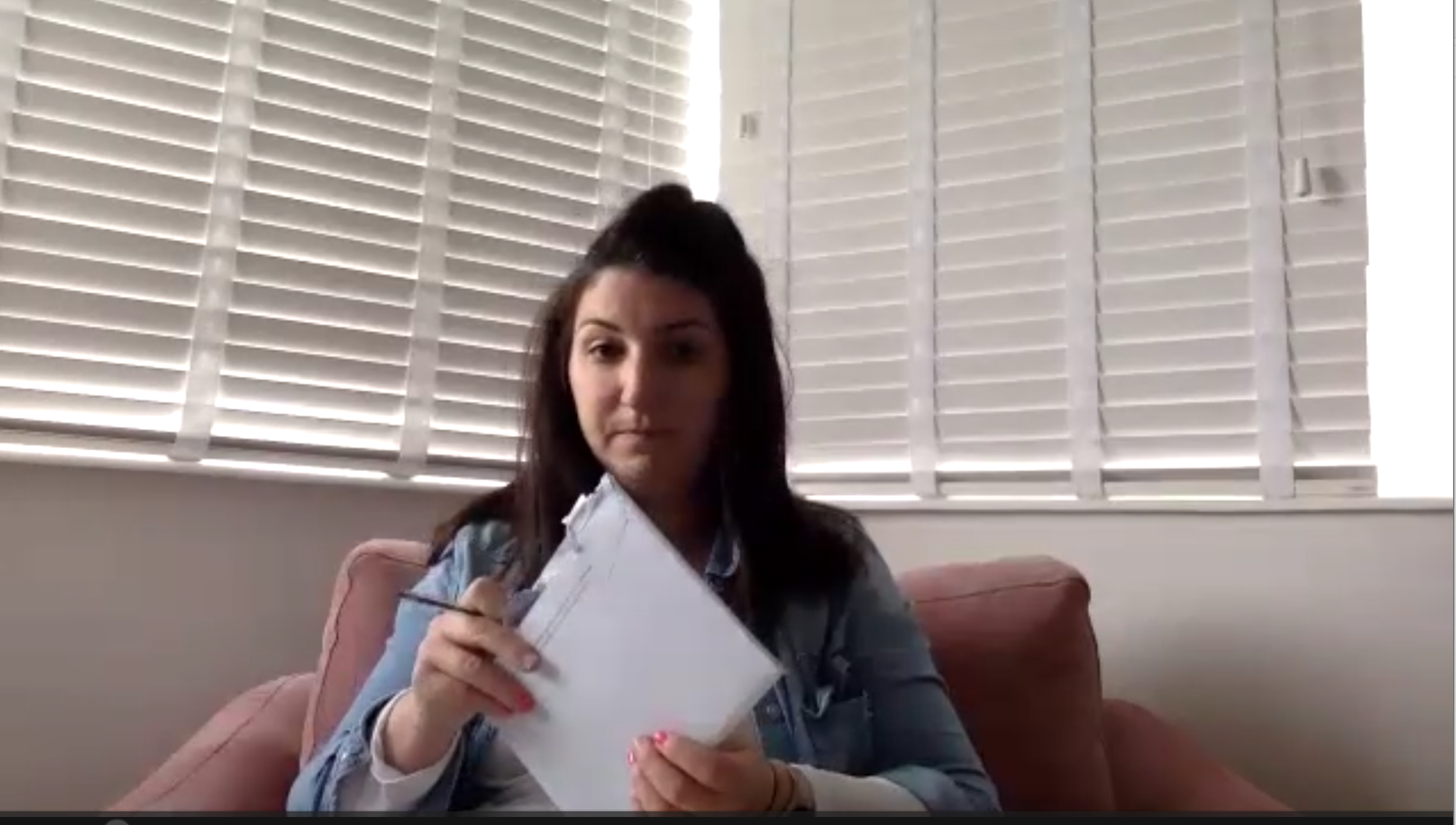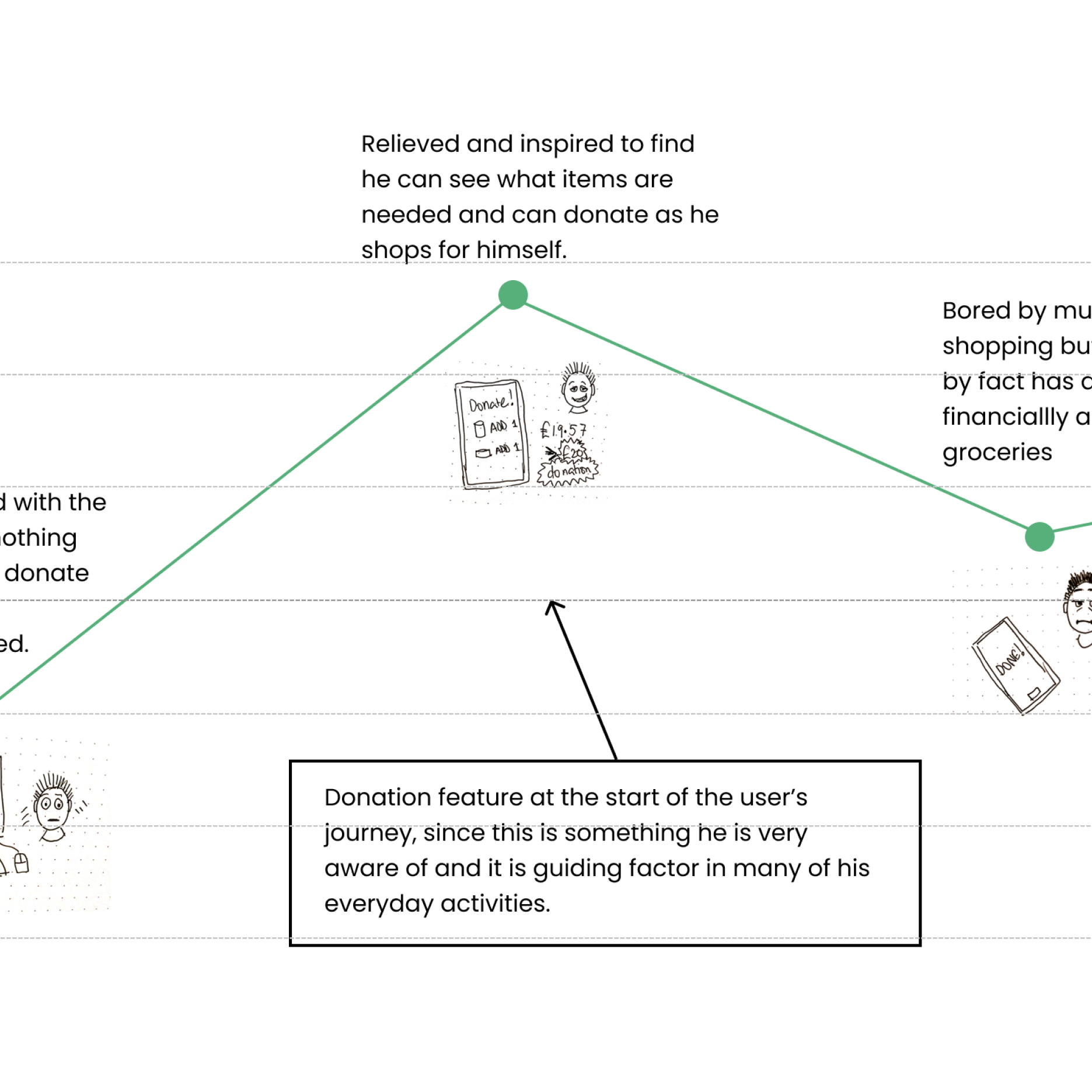Donating to a foodbank while grocery shopping
Role
UX researcher / UX designer
Duration
8 weeks
Note
This is a project part of DesignLab’s UX program and has not been commissioned by Tesco. The research is organic and the design is based on real user voices, in combination with mentor and peer feedback.
🌄 Background
Tesco is the largest UK supermarket, bringing in over £50 billion annually. The app has over 5 million downloads and with more people relying on grocery store deliveries year on year, this number will only increase.
🚵 Challenge
Foodbanks are increasingly in demand but there are limited ways in which people can make grocery donations online. There is no clear guidance as to what items need to be donated, and so for fear of donating the wrong item, people don’t donate at all.
💡 Opportunity
Online grocery shopping increased during and following the pandemic. The cost of living crisis has meant that the need for foodbanks hs increased across the UK.
🗝️ Solution
I decided to add a feature which would allow users to donate items to the foodbank as they shopped for their own groceries. The solution would also allow people to donate financially if they felt this would be beneficial to the foodbank.
🎯 Research Goals
Understand why people buy groceries through an app
Determine how people currently donate to a foodbank
Understand what holds people back from donating to a foodbank
📚 Competitor Analysis
In order to help me get there, I started off with a competitor analysis. Who are Tesco’s competitors? Let’s take a look at some similar products on the market. I analysed their websites and apps for functionality as well as design.
Opportunities and actionable insights
Online financial donation
Ability to buy specific items for the foodbank
Priority of need of items
☎️ User Interviews
I interviewed 3 key users, all of whom shopped at Tesco to some degree of regularity. They all bought groceries online on a weekly basis and felt a strong need to donate to Foodbanks.
Interview insights
interviewees felt an overriding ethical obligation to donate to foodbanks
While felt more comfortable donating food as it was something tangible….
…Others felt it better to give money, so others could decide what was needed.
🛒 Contextual Inquiry
I wanted to observe people donating in store. I visited a local Tesco branch on a Tuesday lunchtime to observe shoppers and ask questions to better understand their motivations and mindsets.
Key Takeaways:
People appreciate some guidance in store regarding the products that the foodbank needs
Shoppers needed reminders regarding donating throughout the shop - not just at the checkout
Donors made a conscious effort to donate before they entered the store, rather than during their shop
🚩 So, what’s the crux of the problem?
Convenience! Our users what to be able to donate, but they want it to be at a time and place that works for them and when they are likely to remember. There is currently a disconnect between donating food items to a foodbank and buying your own groceries. The solution? To combine these into one seamless process.
👩👨 Meet Mandy and Richard
Based on the interviews and contextual inquiry, I found that there were two main types of shopper. These personas serve as a continuous reminder throughout the design process as to who our primary users are.


Mandy’s key moment
Mandy’s journey map differs slightly in that her focus is the groceries with the donation feature a happy accident towards the end of her shop.
✈️ User Journeys
Having spoken to users, I felt I had a good idea as their current journey state including their mindset, frustrations and goals. I looked at both Richard and Mandy and thought carefully about their how their ideal journeys may pan and differ from one another.
Richard’s key moment
They key point of Richard’s user journey is when he establishes the items that the foodbank needs at the start of his shopping experience.
✍️ Wireframe sketches
I spent time experimenting with varying content arrangements and research-based features until I found a layout that made sense within the scope of user needs, wants, and the existing structure and visual guidelines of the existing app.
🎨 Prototype
It was at this point I was able to fully integrate all the elements of the user flow, wireframes using Tesco’s successful UI kit to create a prototype which allows users to add food items and/or donate financially to their foodbank.
🧪 User testing
I carried out moderated user testing over Zoom in order to determine the successes and frustrations of the prototype.
I analysed and synethised the data to produce an empathy map which focused on 3 main screens: home; basket and checkout.
Main discoveries
Feature is well-integrated into the app
Foodbank doesn’t stand out enough on the home screen
Want to easily see which items in my basket are for myself, and which for the foodbank
Unclear breakdown on the order summary page as to where the items and the money are going
👩🔧 Iterations
Making the foodbank feature more prominent on the home screen.
To clarify on the basket screens which items are for the foodbank and which are for personal use.
Create a clearer financial breakdown on the checkout screen
💭 Final thoughts
Since I was adding a feature, I focused primarily on integrating the addition seamlessly into the app. However, in doing so, the feature got lost and users felt it went unnoticed. I came realise that is a fine balance between adhering to the design system and the ensuring that the feature stands out.
🚀 Next steps
If given the chance, I would love to delve deeper into the research aspect for this project since there are so many stakeholders involved in the various stages of this donation process. I would interview Tesco community enagagement employees, Tesco delivery drivers, local foodbanks organisers and larger national foodbank charities.
Finding your next book, based on how you’re feeling
Searching for and booking swimming lessons at a local pool


























